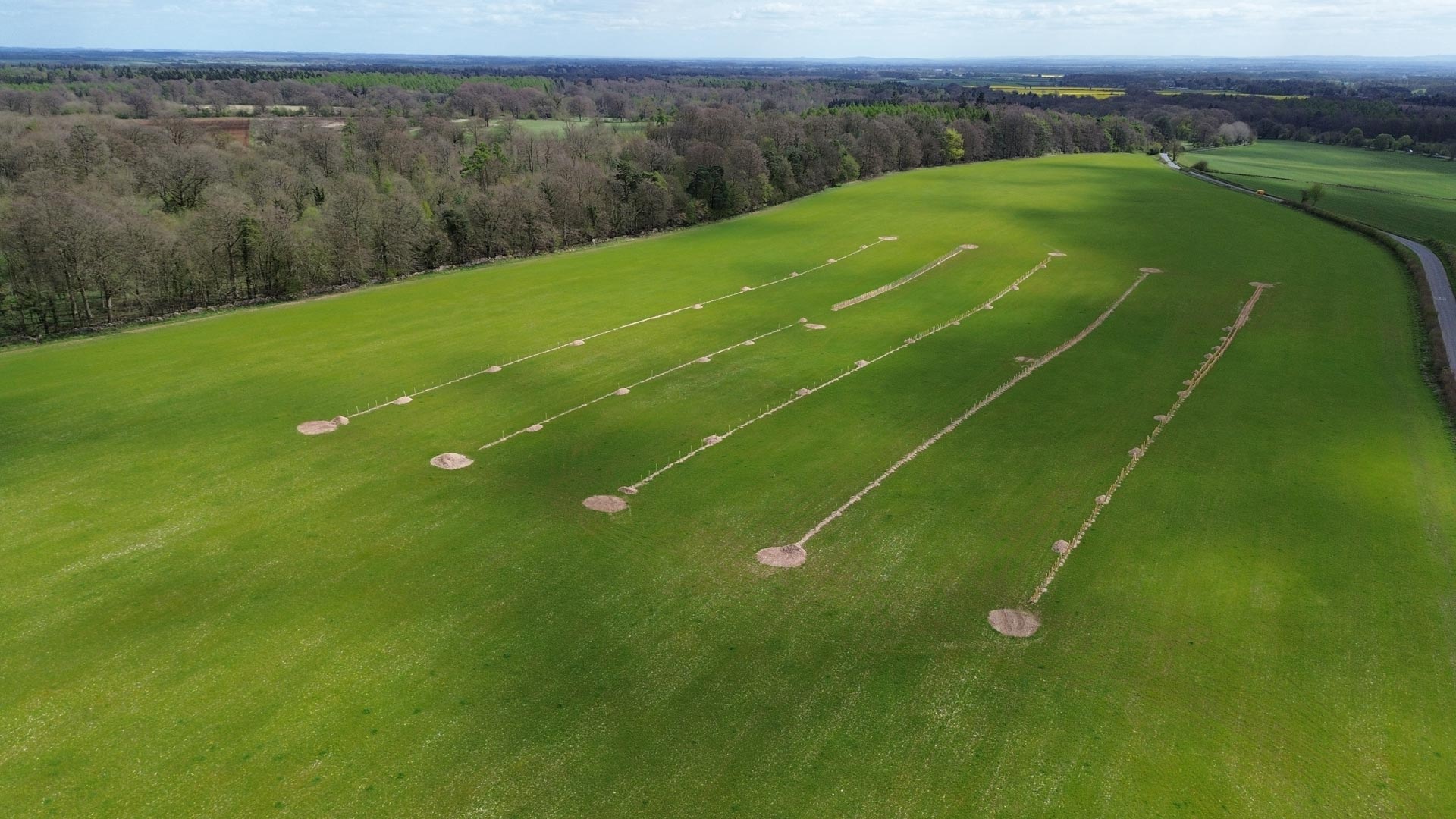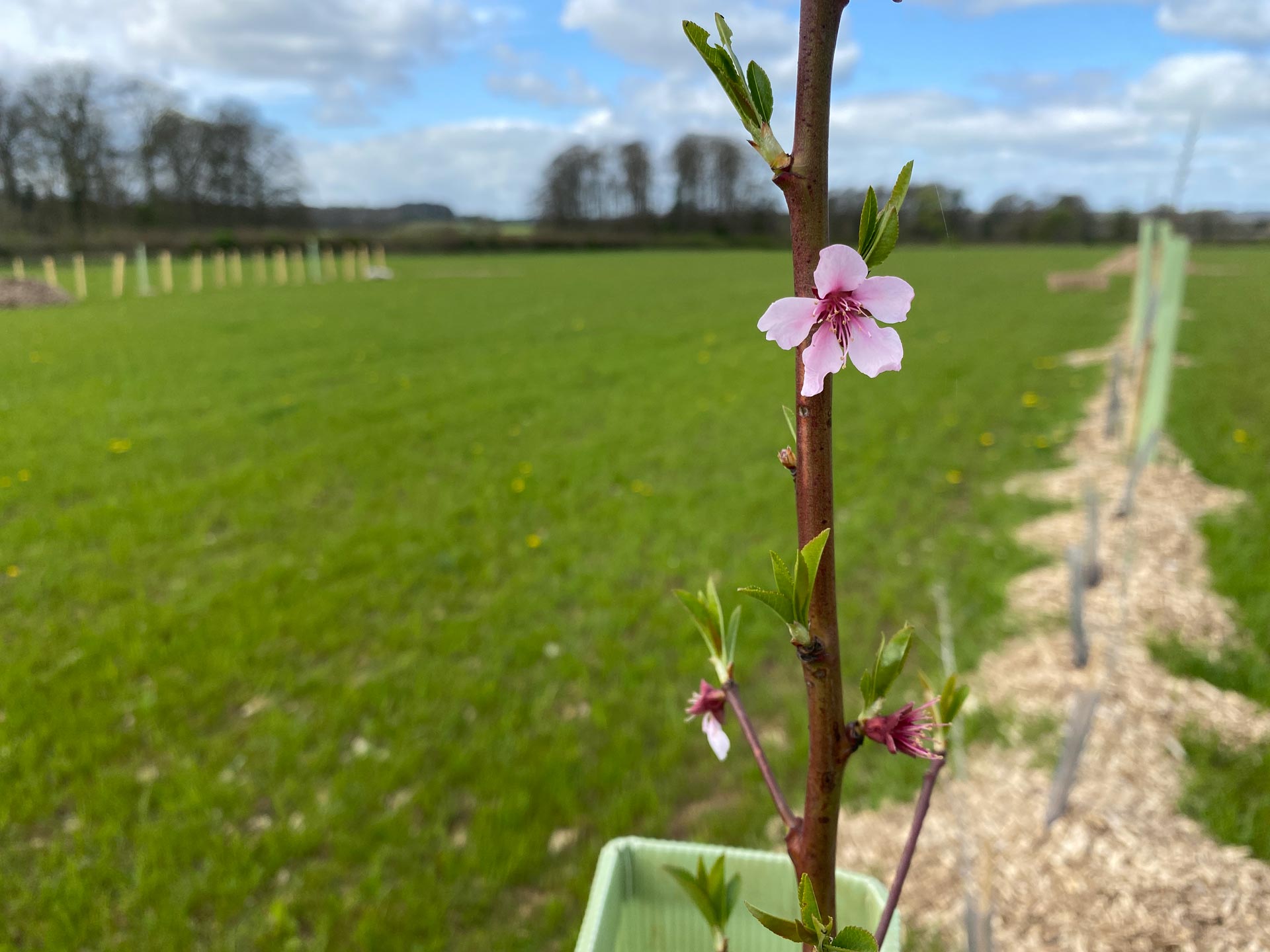“Its been great working with Sapperton Wilder on their experimental agroforestry trial design. We are excited to see the trees grow to deliver benefits in terms of biodiversity recovery and improve the economic performance of the farm. The organised planting day with neighbours from Sapperton village and a local community group was about the best volunteer tree planting event I have attended.”
- Jon Haines, Agroforestry Advisor, Farming & Land Use Team, The Soil Association
Integrating trees into the farming cycle is widely accepted to benefit productivity of soils, support healthier livestock, biodiversity and carbon sequestration. Trees can prevent erosion, cast shade for livestock and can improve yields long term for crops grown in between the rows of trees. For more information, see The Agroforestry Handbook.
Sapperton Wilder is attempting to understand how to do this at scale on depleted Cotswold Brash soils. An experimental plot has been established in Winter 2024 with support from the Soil Association, Woodland Trust, and Gloucestershire County Council, with a view to expand across 1/3rd of the site. Five species are being interplanted with nitrogen-fixing species, selected for yield and climate resilience. The intention is to introduce livestock across the site in rotation. Over 1400 trees were planted and mulched over 4 planting events with the help of local volunteers and the Stroud Valleys Project.
Agroforestry Report 2024: https://www.sappertonwilder.co.uk/content/uploads/Sapperton-Wilder-Agroforestry-Report-2024.pdf

Agroforestry and climate change
With careful design in choosing specific tree species and management approaches, agroforestry has the potential to contribute to climate change mitigation by sequestering carbon in biomass and soils, reducing greenhouse gas emissions, and avoiding emissions through reduced fossil fuel and energy usage on farms.
When planting trees, land managers should consider how the species they plant today will fare in a climate changing future. Considering species that are more adapted to hotter, dryer climates is important, while keeping in consideration native tree species as much as possible. By planting specific varieties such as almonds and walnuts, we are working on solutions to climate change resilience.

